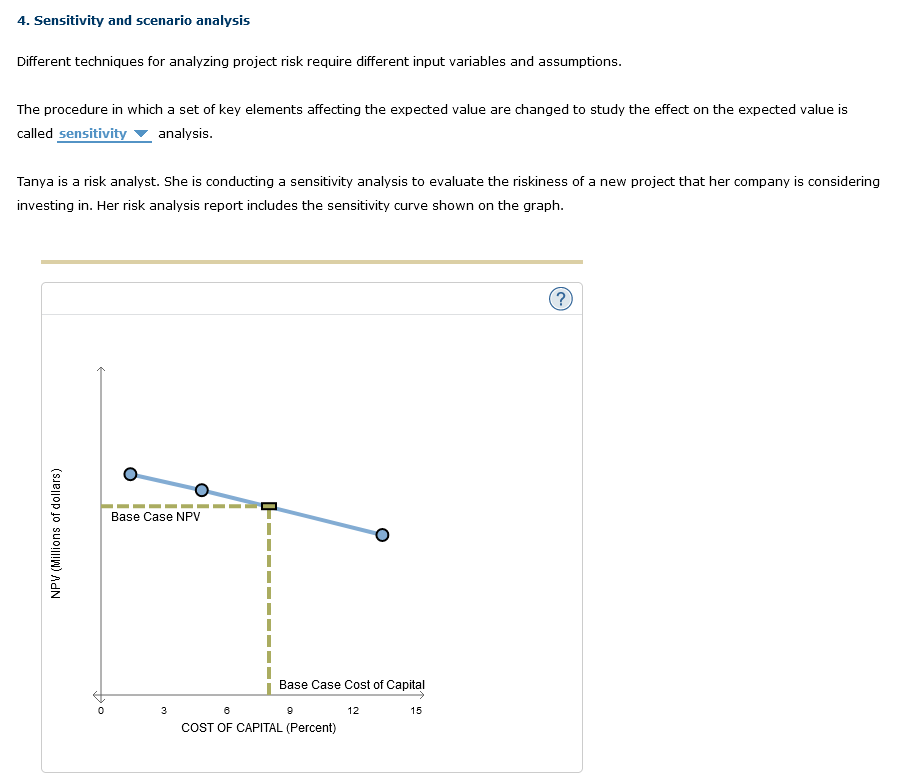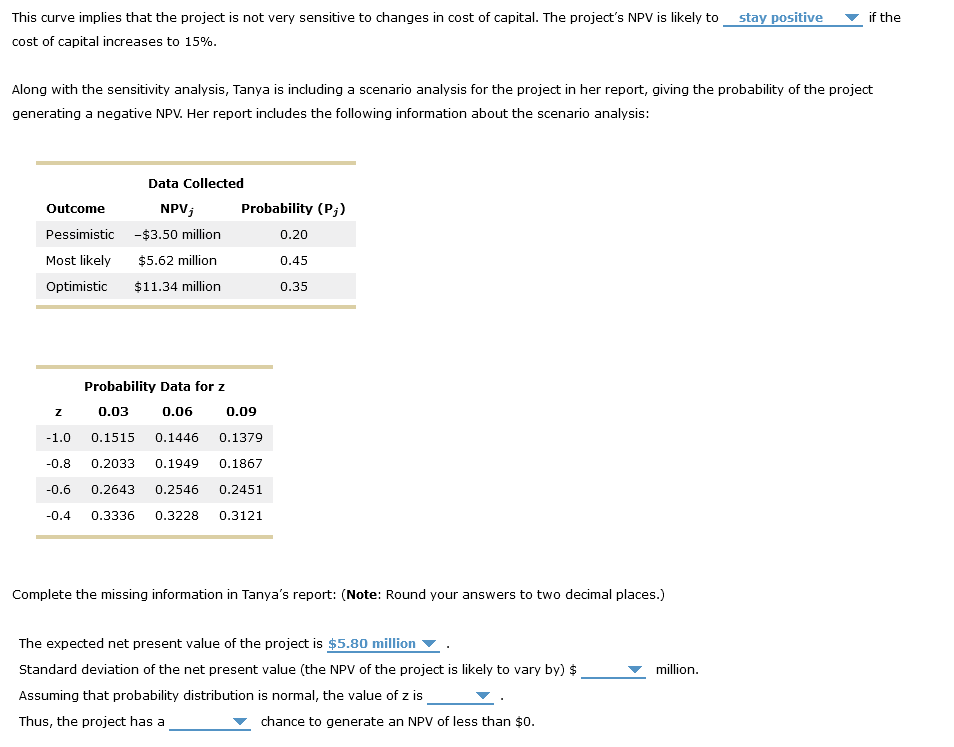Answered step by step
Verified Expert Solution
Question
1 Approved Answer
become negative/stay positive $5.80 / 1.93 / 2.66 / 1.03 million 5.30 / 7.13 / 6.56 / 6.16 -0.65 / 1.03 / -1.09 / -0.83


- become negative/stay positive
- $5.80 / 1.93 / 2.66 / 1.03 million
- 5.30 / 7.13 / 6.56 / 6.16
- -0.65 / 1.03 / -1.09 / -0.83
- 13.79% / 26.43% / 31.21% / 14.46%
Thank you for the help!
Which information doesn't seem specific enough? I have provided everything given with the question, and all possible selections. I can add to this, but I need specific information doesn't tell me what's missing. This problem is from the online HW for Ch 13 of the Cengage intermediate finance textbook - "Capital Budgeting: Estimating Cash Flows and Analyzing Risk.
4. Sensitivity and scenario analysis Different techniques for analyzing project risk require different input variables and assumptions. The procedure in which a set of key elements affecting the expected value are changed to study the effect on the expected value is called analysis. Tanya is a risk analyst. She is conducting a sensitivity analysis to evaluate the riskiness of a new project that her company is considering investing in. Her risk analysis report includes the sensitivity curve shown on the graph. This curve implies that the project is not very sensitive to changes in cost of capital. The project's NPV is likely to if the cost of capital increases to 15%. Along with the sensitivity analysis, Tanya is including a scenario analysis for the project in her report, giving the probability of the project generating a negative NPV. Her report includes the following information about the scenario analysis: Complete the missing information in Tanya's report: (Note: Round your answers to two decimal places.) The expected net present value of the project is Standard deviation of the net present value (the NPV of the project is likely to vary by) $ Assuming that probability distribution is normal, the value of z is Thus, the project has a chance to generate an NPV of less than $0. 4. Sensitivity and scenario analysis Different techniques for analyzing project risk require different input variables and assumptions. The procedure in which a set of key elements affecting the expected value are changed to study the effect on the expected value is called analysis. Tanya is a risk analyst. She is conducting a sensitivity analysis to evaluate the riskiness of a new project that her company is considering investing in. Her risk analysis report includes the sensitivity curve shown on the graph. This curve implies that the project is not very sensitive to changes in cost of capital. The project's NPV is likely to if the cost of capital increases to 15%. Along with the sensitivity analysis, Tanya is including a scenario analysis for the project in her report, giving the probability of the project generating a negative NPV. Her report includes the following information about the scenario analysis: Complete the missing information in Tanya's report: (Note: Round your answers to two decimal places.) The expected net present value of the project is Standard deviation of the net present value (the NPV of the project is likely to vary by) $ Assuming that probability distribution is normal, the value of z is Thus, the project has a chance to generate an NPV of less than $0Step by Step Solution
There are 3 Steps involved in it
Step: 1

Get Instant Access to Expert-Tailored Solutions
See step-by-step solutions with expert insights and AI powered tools for academic success
Step: 2

Step: 3

Ace Your Homework with AI
Get the answers you need in no time with our AI-driven, step-by-step assistance
Get Started


